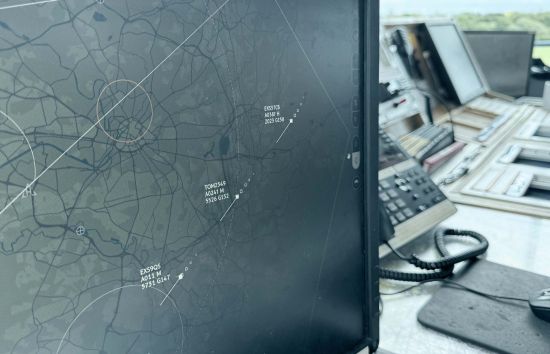
The Benefits of Flight Information Displays (FIDs) in Air Traffic Control and Aerodrome Flight Information Services
Nick Duriez
Flight Information Displays (FIDs) can play a pivotal role in enhancing the efficiency and safety of air traffic control and aerodrome flight information services. By leveraging advanced electronic conspicuity technology, these systems provide crucial situational awareness for both ground and airborne operations.
Traditional modern conspicuity methods started with the introduction of primary radar systems in the late 1940’s, which provided basic position information of aircraft but lacked any identification capabilities. Then in the 1970’s the development and deployment of secondary surveillance radar (SSR) allowed aircraft to be identified and provided more accurate positional information via the aircraft transponder. With the adoption of Mode-S transponders over the past 20 years, further enhancements and data capabilities have arisen. However with both primary and secondary radar, the costs of installing and maintaining these systems is considerable.
More recently, the implementation of ADS-B (Automatic Dependent Surveillance-Broadcast) represented a significant leap in Electronic Conspicuity (EC), allowing aircraft to broadcast their GPS position, altitude, velocity and other information that can be received with inexpensive antenna.
Further leaps in EC have arisen as technologies emerge and develop. With FLARM and CAP1391 compliant devices, specifically designed for smaller aircraft and drones, the ability for aircraft to be easily detected continues to enhance the safety of our skies. In many cases, pilots can now directly receive EC signals in the cockpit.
Inevitably, these benefits of combining EC technologies have began to migrate into the control tower, where Air Traffic Controllers or Flight Information Service Offices can now have real-time access to comprehensive flight information. In the UK, the Civil Aviation Authority introduced regulations(1) that for the first time permitted use of EC data to provide an enhanced situational display, known as a Flight Information Display.
FIDs can form an essential part of the toolkit for Air Traffic Services by:
-
Enhancing Ground Operations: Providing real-time updates on aircraft and vehicle movements, improving safety, assisting with coordination, and reducing delays.
-
Improving Airborne Situational Awareness: Offering pilots and controllers real-time data on nearby aircraft, enhancing collision avoidance and flight safety for all airspace users.
-
Enabling effective use of integrated airspace: With enhanced use of EC, airspace can be effectively managed and shared with a variety of airspace users, from light general aviation, larger commercial and even unmanned aerial vehicles.
Here at DataBeacon, we have embraced the technology advancements to create a professional-grade Flight Information Display named Romeo5, designed from the start for complete regulatory compliance, and with a human centered approach to the intuitive display, to ensure maximum usability at all times.
Flight Information Displays, backed by advanced electronic conspicuity technology, are indispensable for modern air traffic control and aerodrome flight information services. They enhance operational efficiency, improve safety, and provide crucial situational awareness, making them a vital component of the aviation industry.
By staying at the forefront of technological advancements, FIDs ensure that air traffic services can meet the increasing demands of modern aviation, ultimately contributing to safer and more efficient skies.
For more details about Romeo5, visit databeacon.aero/romeo5/ or join our live Webinar on 3rd/24th September: ‘Romeo5 – How to enhance your air and ground situational awareness’ . Click here to register.
(1) CAP 670 SA 2021/02: Cooperative Surveillance Systems & Flight Information Displays | Civil Aviation Authority


